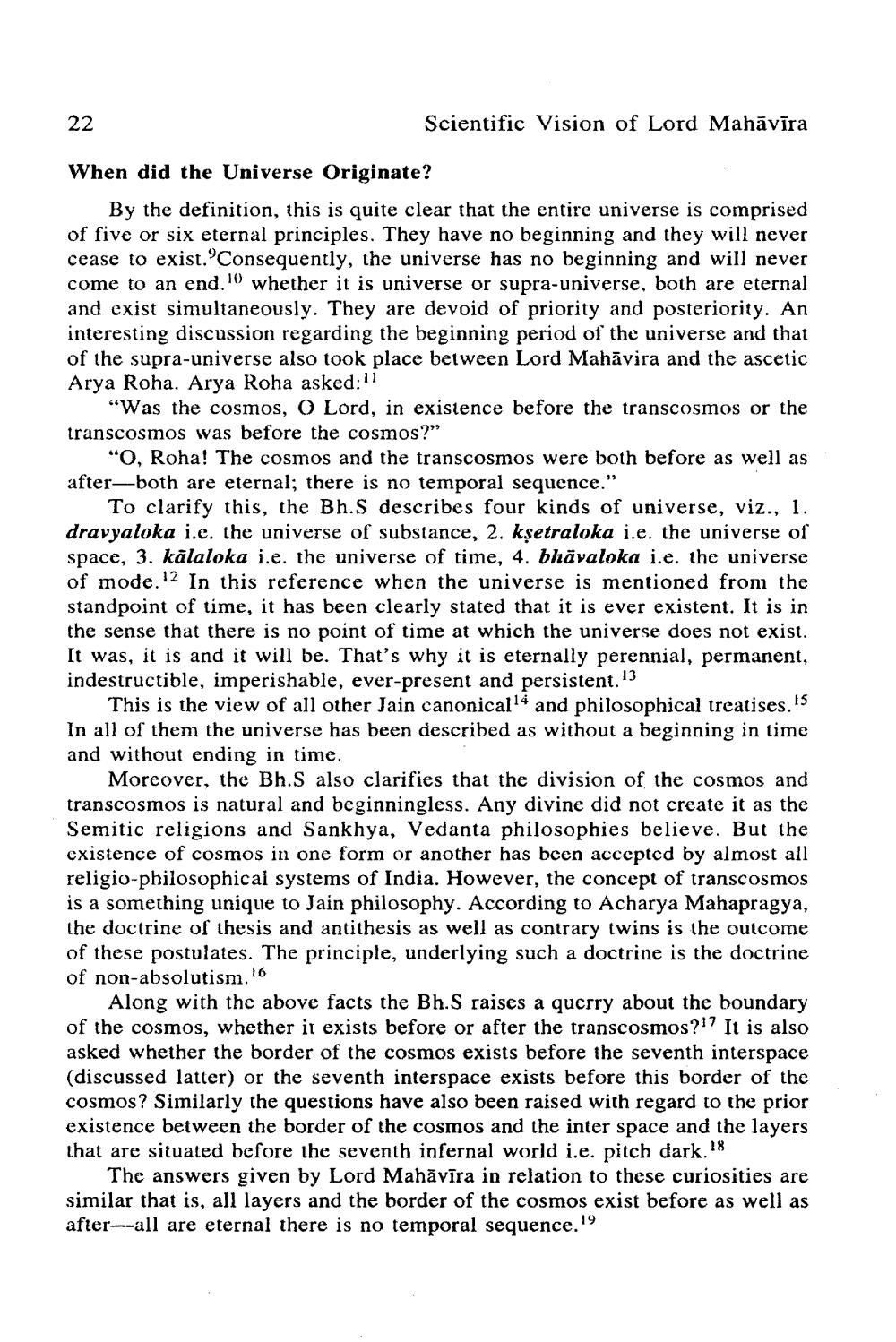________________
22
Scientific Vision of Lord Mahāvīra
When did the Universe Originate?
By the definition, this is quite clear that the entire universe is comprised of five or six eternal principles. They have no beginning and they will never cease to exist. Consequently, the universe has no beginning and will never come to an end. 10 whether it is universe or supra-universe, both are eternal and exist simultaneously. They are devoid of priority and posteriority. An interesting discussion regarding the beginning period of the universe and that of the supra-universe also took place between Lord Mahāvira and the ascetic Arya Roha. Arya Roha asked:11
"Was the cosmos, O Lord, in existence before the transcosmos or the transcosmos was before the cosmos?”
"O, Roha! The cosmos and the transcosmos were both before as well as after-both are eternal; there is no temporal sequence."
To clarify this, the Bh.S describes four kinds of universe, viz., 1. dravyaloka i.e. the universe of substance, 2. kşetraloka i.e. the universe of space, 3. kālaloka i.e. the universe of time, 4. bhāvaloka i.e. the universe of mode. 12 In this reference when the universe is mentioned from the standpoint of time, it has been clearly stated that it is ever existent. It is in the sense that there is no point of time at which the universe does not exist. It was, it is and it will be. That's why it is eternally perennial, permanent, indestructible, imperishable, ever-present and persistent.13
This is the view of all other Jain canonicall4 and philosophical treatises. 15 In all of them the universe has been described as without a beginning in time and without ending in time.
Moreover, the Bh.S also clarifies that the division of the cosmos and transcosmos is natural and beginningless. Any divine did not create it as the Semitic religions and Sankhya, Vedanta philosophies believe. But the existence of cosmos in one form or another has been accepted by almost all religio-philosophical systems of India. However, the concept of transcosmos is a something unique to Jain philosophy. According to Acharya Mahapragya, the doctrine of thesis and antithesis as well as contrary twins is the outcome of these postulates. The principle, underlying such a doctrine is the doctrine of non-absolutism.16
Along with the above facts the Bh.S raises a querry about the boundary of the cosmos, whether it exists before or after the transcosmos?!? It is also asked whether the border of the cosmos exists before the seventh interspace (discussed latter) or the seventh interspace exists before this border of the cosmos? Similarly the questions have also been raised with regard to the prior existence between the border of the cosmos and the inter space and the layers that are situated before the seventh infernal world i.e. pitch dark. 18
The answers given by Lord Mahāvīra in relation to these curiosities are similar that is, all layers and the border of the cosmos exist before as well as after--all are eternal there is no temporal sequence.19




